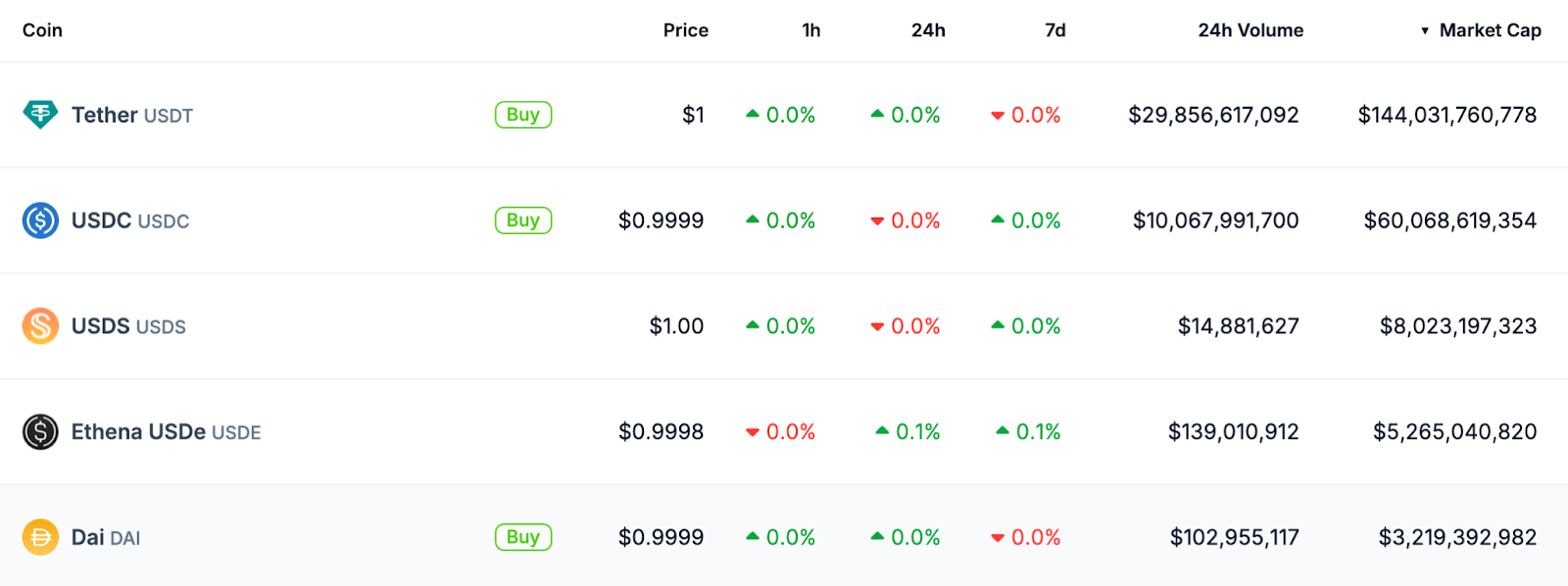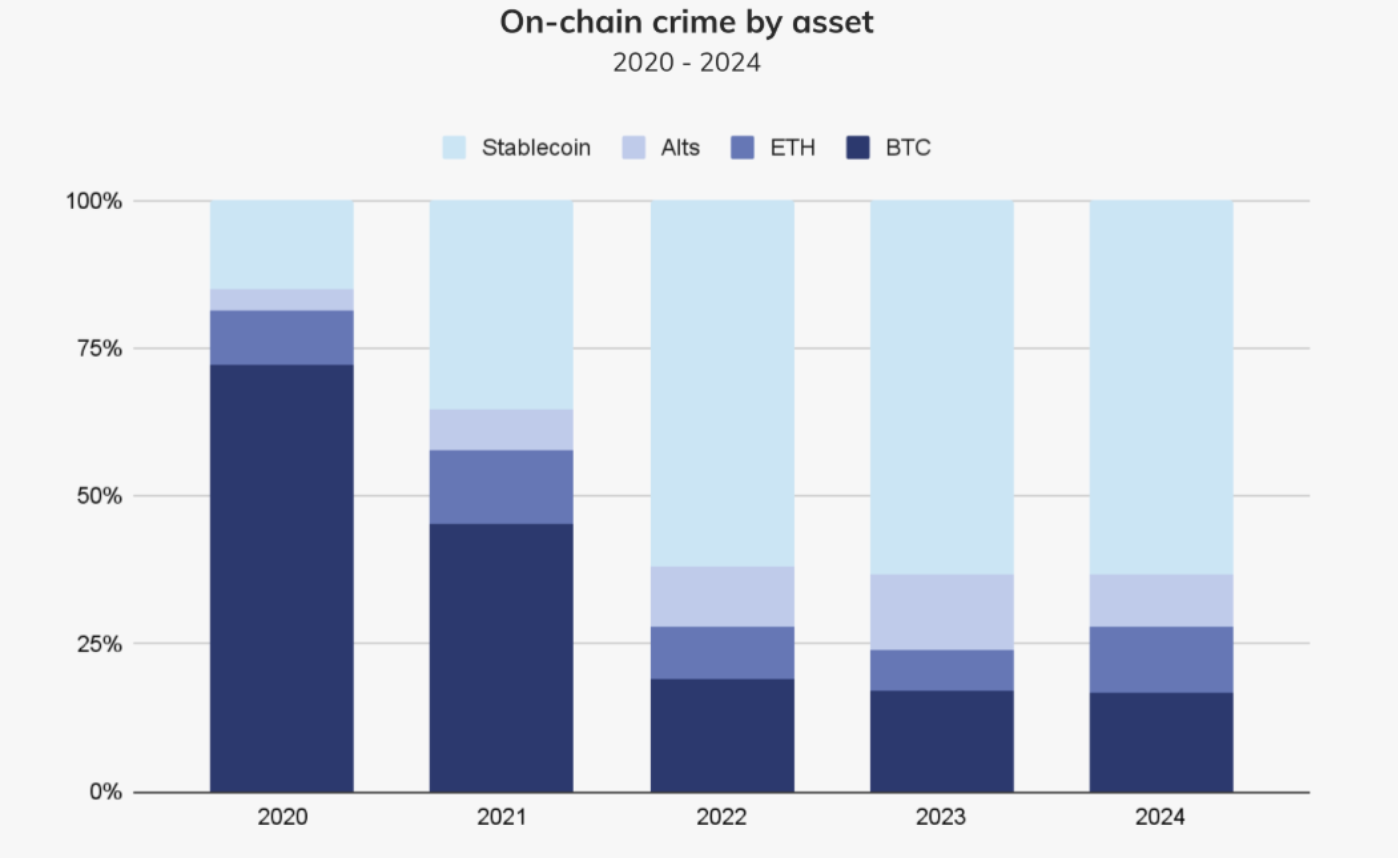来源: Cointelegraph原文: 《{title}》
上个周,媒体报道称美国资产管理公司富达投资(Fidelity Investments)的数字资产部门正在测试一种稳定币,但暂时没有立即推出的计划。除此之外,特朗普家族的加密货币项目世界自由金融公司(World Liberty Financial)也表示将推出与美元挂钩的稳定币USD1。
稳定币是一种旨在保持恒定价值的加密货币,通常与美元1:1挂钩,从而使交易者更容易在不同加密货币之间转移资金。
稳定币市场现状
近年来,稳定币的使用量大幅增长,流通中的稳定币平均供应量每年增长约28%。与此同时,2024年稳定币的总转账量达到27.6万亿美元,超过了当年Visa和Mastercard交易额的总和。
目前,Tether(USDT)仍然是市场上规模最大的稳定币。USDT于2014年推出,与美元1:1挂钩,并可在以太坊(Ethereum)、索拉纳(Solana) 和波场(Tron)等多个主要区块链上使用。该稳定币在行业内占据主导地位,市值超过1400亿美元。
排名第二的稳定币是 USD Coin(USDC),由Circle发行,市值超过600亿美元。
USDT和USDC在全球市值上的巨大差距,部分可以归因于它们在不同地区的采用情况。USDT的大部分交易量集中在亚洲和欧洲,而USDC则主要在北美地区交易。
除了USDT和USDC,市场上还有其他稳定币在流通。例如,USDP由Web3原生公司Paxos发行,而 PYUSD则由传统支付巨头PayPal发行。

截至4月2日,市值排名前五的稳定币。来源:CoinGecko
为何稳定币越来越受欢迎?
降低风险
稳定币之所以被创造并获得如此高的普及度,主要原因之一是它们旨在减少加密货币所带来的风险,并创造一种可以使用且由真实货币支持的数字货币。
因此,稳定币可以作为流动性指标,因为它们旨在保持稳定的价格。市场参与者使用稳定币在不接受法币的市场上购买其他加密货币,并在其他加密货币价值发生重大波动时,将资金储存为稳定币以应对风险。
补足加密货币交易中的关键缺口
许多全球知名的加密货币交易所面临的问题是投资者无法使用硬通货(如美元、欧元等)购买他们想要的加密货币。
由于对洗钱的担忧,许多机构一直避免使用加密货币交易所。但随着稳定币的崛起,它可能成为投资者的救星,因为它将允许他们与银行直接进行沟通和合作,使交易更加透明和高效。
监管释放宽松环境
2023年8月,新加坡金融管理局(MAS)建立完善的稳定币监管框架,明确规定发行机构须维持最低资本要求,并将储备金配置于低风险资产。该框架同时设立严格的赎回机制和信息披露制度。
美国白宫拟于4月将稳定币法案提交参议院审议,标志着在为稳定币制定明确道路规则的持续努力中向前迈出了重要一步。白宫表示,如果参议院版本的稳定币法案得到足够的支持,或将以现有形式签署成为法律。
除此之外,香港地区和欧盟也在2024年分别发布了加密资产相关的监管框架,努力在促进金融创新与维护金融稳定之间寻求平衡。
千亿美元市场下一步 如何发展?
去中心化稳定币协议Ethena的创始人Guy Young去年在与Cointelegraph的采访中预测,今年USDT将继续是最头部的稳定币,稳定币的总市值将升至3000亿美元。
“我预计流通中的稳定币总量将突破3000亿美元,Tether将凭借其现有护城河继续占据主导地位,而市场的其他参与者将面临来自新兴金融科技公司和Web2企业的挑战,这些公司正在推出自己的稳定币产品。”
Visa 加密货币部门负责人Cuy Sheffield则表示,稳定币的广泛应用可以实现全球支付的现代化和优化,但目前稳定币的消费机会仍然有限。
“如果说2024年是稳定币需求回升的一年,那么2025年将迎来下一个关键机遇:稳定币绑定银行卡的兴起。”
虽然稳定币为投资者提供了相对安全和低波动的选择,但近年来,稳定币已经成为加密货币犯罪交易中最常使用的类型。
根据Chainalysis的《2025年加密犯罪报告》,去年与犯罪活动相关的加密交易中,有63%使用了稳定币。

按资产分类的链上犯罪。来源:Chainalysis
报告指出:“这一新现象是更广泛生态系统趋势的一部分,稳定币在所有加密活动中也占据了相当大的份额,稳定币活动的年增长率约为 77%。”
免责声明:本文章仅代表作者个人观点,不代表本平台的立场和观点。本文章仅供信息分享,不构成对任何人的任何投资建议。用户与作者之间的任何争议,与本平台无关。如网页中刊载的文章或图片涉及侵权,请提供相关的权利证明和身份证明发送邮件到support@aicoin.com,本平台相关工作人员将会进行核查。




